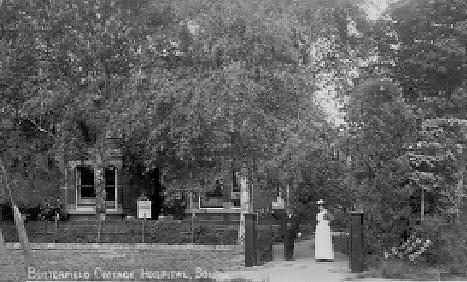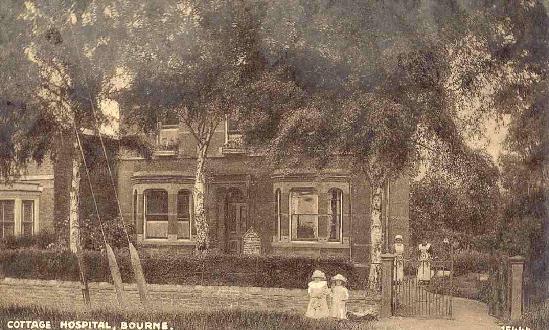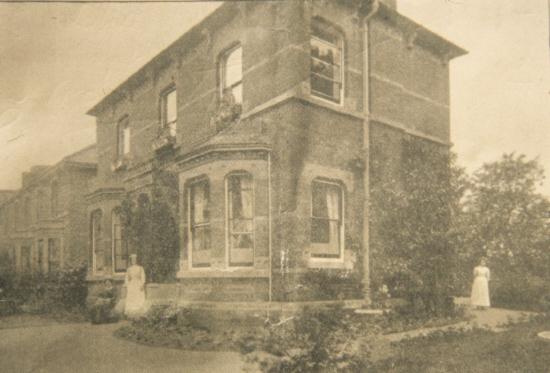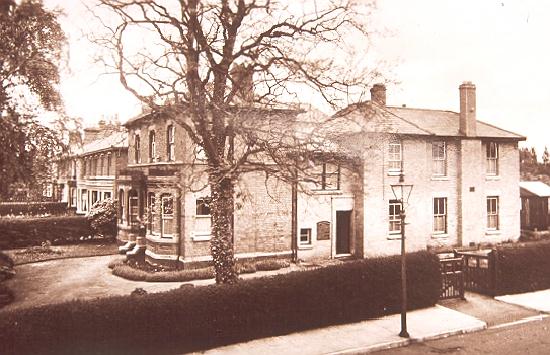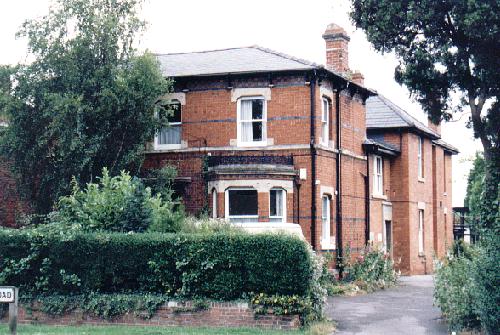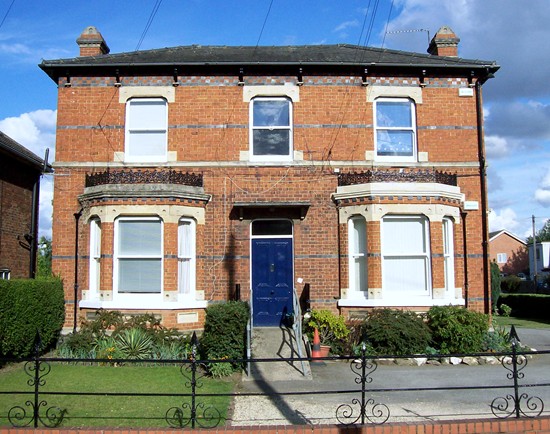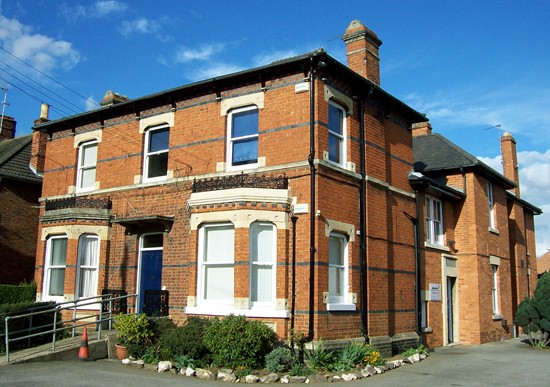|
The Butterfield Hospital
The Bourne Nursing Association was established in the late 19th century through the encouragement of Alderman William Wherry (1841-1915). He proposed that such an
organisation should be formed with voluntary subscriptions and public grants as a permanent memorial to Queen Victoria's Diamond Jubilee in 1897 but the suggestion got a mixed reception and there was some opposition. The association was formed two years later in 1899 and Alderman Wherry became its president with an organising committee to administer day to day affairs. A search began immediately for suitable staff, the assignment being given to Mrs Caroline Galletly, wife of the local doctor John Galletly (senior), who had been appointed honorary secretary of the association, and an advertisement soon began appearing in the local newspapers saying: "Wanted to train as cottage nurses, respectable young women of 21 and over. Salary to commence £23. Lodgings provided. From those who applied, a parish nurse with overall control was appointed.
In 1905, Nurse Bellamy was released to go to Lincoln for several weeks to assist in a typhoid epidemic, her absence being sanctioned by the committee "in the interests of the occupants of Bourne". The nursing association was offered a property in 1909 for use as a cottage hospital, a large detached house of red brick and blue slate on the corner of North Road and Meadowgate. The house, called Brooklands, had been the home of Mr Joseph Butterfield who had moved from Yorkshire some years before and when he died in 1909, aged 55, it was bequeathed in his will to the town on the condition that it should be devoted to the relief of suffering. Miss Eliza Butterfield, one of his two daughters, was appointed a trustee to ensure that his wishes were carried out. Alderman Wherry, one of the overseers of the parish of Bourne at that time, was also a trustee of Mr Butterfield's will and under his guidance, it was decided that the association should have the use of the house as a cottage hospital and as much of the furniture as they desired. The trustees also offered £50 towards buying equipment and a further £50 a year for three years and at the end of that time, the association would take over responsibility for its running. The trustees would then make a free gift of the premises to the Committee of the Nursing Association and invest a capital sum of £1,000 to provide income that would be devoted to the upkeep of the hospital. The trustees also stipulated that they would serve on the committee whose members would also include all of the general practitioners resident in the town at that time. Because of the complicated legal procedures, the actual deed handing over the building was not presented to the Nursing Association until its annual meeting on Tuesday 3rd June 1913. The document provided for the transfer of the property in trust, to be used for the same purpose as at present, namely the Butterfield Hospital, together with an endowment of over £1,000 capital, with a proviso that that annual interest be allocated to the upkeep of the hospital. The first trustees appointed were Alderman W R Wherry, Mr T F Alletson (Louth) and Mr A E K Wherry, all of whom had been trustees of Mr Butterfield's will, together with Mr T M Baxter (treasurer), Mr Arthur Saul and Mr C H M Baxter.
The official opening of the hospital took place on 28th June 1910 and was performed by the Countess of Ancaster who lived at nearby Grimsthorpe Castle and a report on the event in the
Stamford Mercury
said: "The home is an ideal one for its purpose and is now being used. It is pleasantly situated and is in every way convenient. The front room on the left of the entrance is the patients' room with two beds and that on the opposite side is the nurses' apartments. One of the front rooms upstairs also contains a bed for a patient and an operating table, the other rooms being for the nurses. The house stands in a considerable area of garden ground which could be utilised by extending the building for additional wards."
The house and grounds had been decorated for the opening and a temporary platform erected over the steps at the front entrance and it was from here that Alderman Wherry told the gathering of the committee's hopes for the new facility. "It is only the beginning of a much larger work", he said. "There is room behind the present building for
wards with another 150 more bed spaces if necessary." The hospital was greatly enlarged in 1920 as a memorial to those who fell in the Great War. The total cost of the extensions was £2,250 but the Red Cross contributed £1,000 of this and a further £700 was raised by a Peace Memorial Fund in the town and district while there were also a number of small legacies. The new wing was officially opened on Wednesday 11th May 1921 by Lady Florence Willoughby who was accompanied by her husband, Colonel Claud Willoughby, the Member of Parliament for the constituency. It extended eastwards from the main building and the side door was merged into a main entrance where a stone cut in gilt letters was placed above it saying:
Many members of the house committee which ran the hospital occupied influential positions in the town and they were not reluctant to use their powers for the good of patients. At their quarterly meeting on Tuesday 3rd July 1923, under the chairmanship of Mr A E K Wherry, the committee considered complaints about the noise of motor cycles passing on the road outside which they considered to be prejudicial to the condition of patients in a serious state. They therefore wrote to the secretary of the Bourne Motor Cycle Club asking members to drive quietly past the hospital and also to the Automobile Association requesting that notice boards be erected on the highway bearing a similar wording. By 1965, the hospital was maintaining 12 beds in three wards, one male, one female and one private. There were five full time nursing staff and four part time with a further four employed on night time duty and there were also four kitchen staff and a porter. Minor surgery was performed in the operating theatre and the hospital also had a busy casualty department while weekly clinics were held by visiting consultants. In that year, on February 13th, a patient, Miss Sarah Saunders, celebrated her 100th birthday and received a telegram of congratulations from the Queen together with a visit from council leaders who presented her with a bouquet. She was also sprightly enough to receive a television reporter and camera crew and the film of her interview appeared that evening on Anglia TV. The Butterfield continued to provide a valuable medical service for the town and public opinion helped it survive several attempts at closure, particularly in October 1982 when nurses and members of the public turned out in force to protest and 6,000 people signed a petition demanding that it remain open. But financial restraints and a streamlining of National Health Service resources eventually sounded the death knell and it closed in 1983. Officers from Age Concern in Bourne, supported by local councillors, persuaded Lincolnshire County Council to buy the building from the Peterborough Area Health Authority for £26,000 for use as a day centre by old people and this has been its role since 1985.
It is known as the Butterfield Day Care Centre,
now a registered charity which is self-financing but assisted with grants from
local authorities. In 1989, the facility was catering for 300 people with day care provision for a further 120, the average age of members being 77, and its operation was seen as a means of keeping the elderly out of sheltered accommodation by allowing them to stay in their own homes and remain active in the community. By 2001, it was open only on four days a week, catering for around 30 people a day with an average age of
84. By 2002 there were 90 elderly visitors a week and the centre was offering
meals and social activities together with bathing facilities, hairdressing,
chiropody, a library, a domestic service offering help in 80 homes and gardens
and, most importantly, a place where the elderly can meet and talk, knowing
that they will be picked up and returned home in the centre's minibus.
See also Sister Grace Bristow The Butterfield Centre in 2009 Alderman William Wherry Rag Days for the Butterfield
Go to: Main Index Villages Index |



